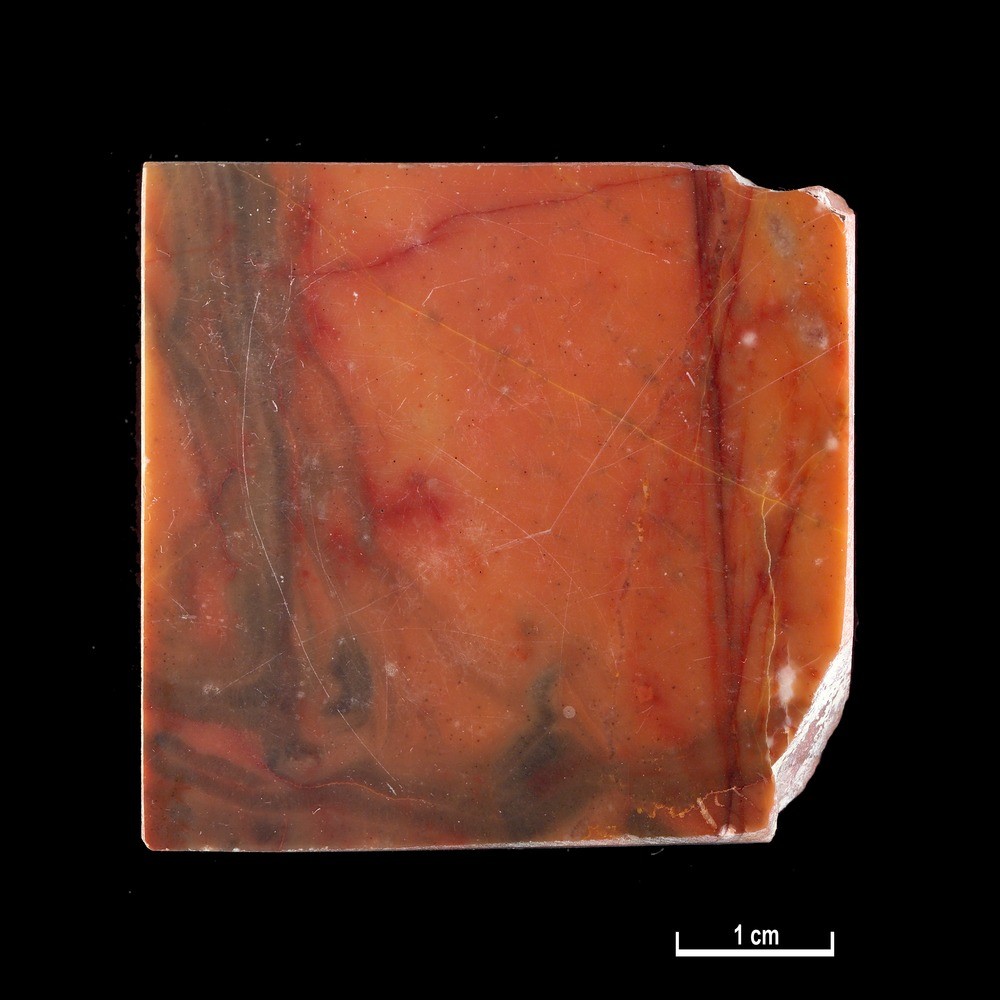| P number: | P576018 |
|---|---|
| Caption: | Marble specimen. Breche Sanguine. Kleber quarries, Algeria. |
| Description: |
Label name: Breche Sanguine. Specimen description: Brown with red and green veins-fragments. T. A. Barber Esq. Text from: Watson, J. British and foreign marbles and other ornamental stones. Cambridge : University Press, 1916. 503 BRECHE SANGUINE. Kleber Quarries, Oran Prov., Algeria. This specimen is a typical example of the brecciated rocks which are included in the group of Numidian Marbles from Montagne Grise. These are quarried on the west side of the plateau, where some great earth movements appear to have taken place. The rocks have been crushed into fragments which have subsequently been cemented together. The fragments have retained their original colours of bright red or yellow, while the cementing material has been stained by metallic oxides into deep purplish red and brown, the whole forming a handsome breccia of various shades of colour and degrees of fineness. The matrix as well as the fragmental portion of the rock is very hard, and it takes a high polish. The quarries were well known to the Romans who held this brilliantly coloured marble in much esteem for decorative purposes. Fluted columns of it may be seen in the Pantheon. It was also used for plinths in the Church of St Maria Maggiore. As was the case with the Giallo Antico lately described, this variety of Numidian Marble was lost sight of for many generations, but the quarries were rediscovered, and the marble is now extensively employed for decorative work. There are examples of its use in London. The bases and copings of the pilasters in the New Sessions House, built in 1907, are composed of it. Columns of it may be seen in the King's Hall Rooms of the Holborn Restaurant (1894). It was employed in forming the Opus Alexandrinum pavement in the chancel of Bristol Cathedral in 1895; and it may also be seen in the chancel of Truro Cathedral ii886). The shelves of the Retable, erected in Peterborough Cathedral in 1894, are composed of it. Breche Sanguine is frequently sent to the United States where it is used for decorative purposes. An instance may be seen in the Carnegie Library, Pittsburg, which was built in 1904, the columns, pilasters, and wainscoting in the smoking-room being composed of it. This marble is sometimes known in France and elserwhere as Rouge Etrusque. |
| Date taken: | Thu Jan 01 00:00:00 GMT 2004 |
| Photographer: | McIntyre, B.M. |
| Copyright statement: | NERC |
| Additional information: | The marble is from the Walter Brown Collection, Scottish Mineral and Lapidary Club. |
| Orientation: | Square |
| Size: | 148.98 KB; 1000 x 1000 pixels; 85 x 85 mm (print at 300 DPI); 265 x 265 mm (screen at 96 DPI); |
| Average Rating: | Not yet rated |
| Categories: | Unsorted Images |
Reviews
There is currently no feedback

